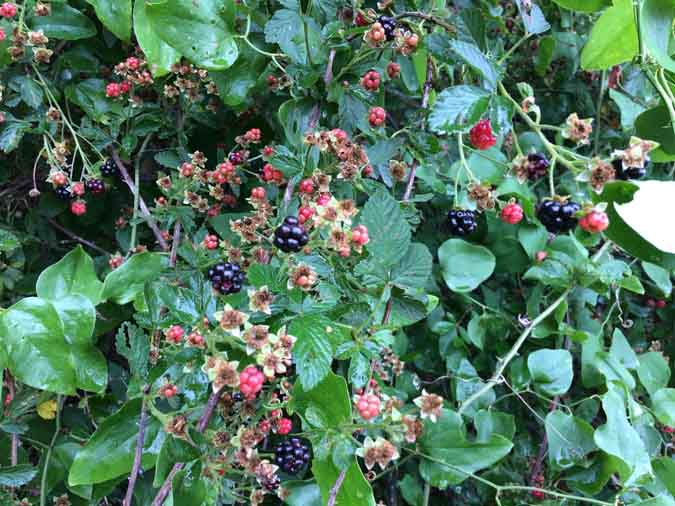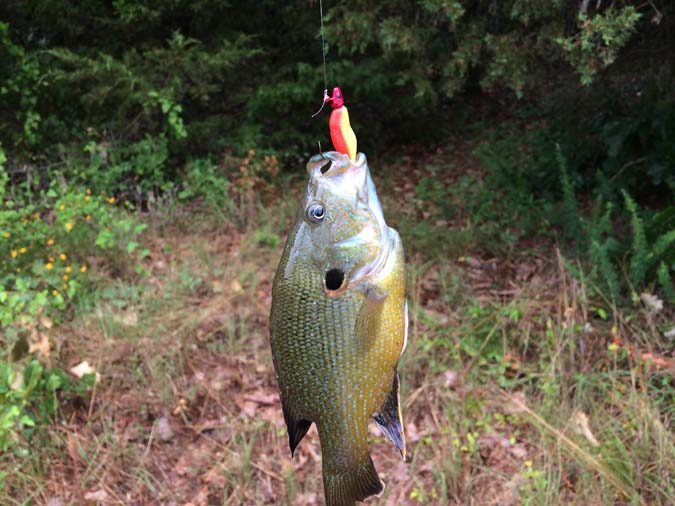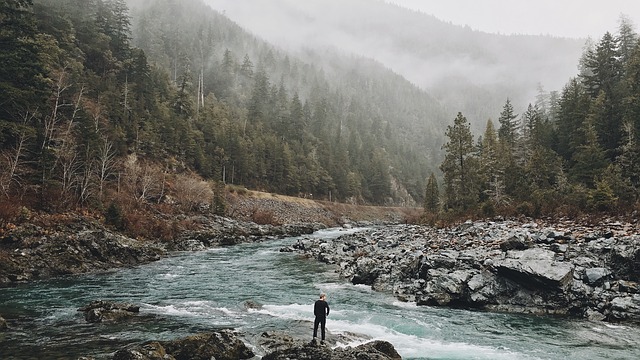Welcome to the 30-Day Survival Challenge!
Whether you spend your leisure time reading The Swiss Family Robinson, watching shows like Doomsday Preppers, or just enjoying the outdoors, you’ve probably had a survival fantasy at one time or another.
How hard is it to live off the land?
Could you do it?
For how long?
It’s a fascinating topic.
Follow my journey in this series of articles and videos as I survive for 30 days off of the foods I can get through foraging, hunting, fishing, and trapping. Along the way, I’ll pass along my strategies, tips, and tricks for survival.
My survival month will be split into two parts. For the first half, I’ll be at home. I’m combining the responsibilities of regular life with the demands of survival. For most of this time, my wife is out of town, so I’ll have full parental duties as well. My goal here is to mimic a stay-at-home type of emergency, such as a personal financial crisis or economic collapse.
During the second half of the month, I’ll be taking to the woods for a more traditional survival adventure. A friend and I will hike the Ozark Highlands Trail in Arkansas (165 miles/265 kilometers) from end to end. We’ll have only the equipment we pack in, and we’ll eat only what we can find along the way.
Living Off the Land: The First 3 Days
My first days were marked by a sense of adventure . . . and also a significant calorie deficit.
That’s normal, by the way. I was starting with nothing, and it takes time to build up enough resources to get comfortable. As an extra challenge, I’ve had a lot of time-consuming errands and trips that haven’t left me much time to gather food.
Bodily State: Tantrum
While my mind understands the big picture and knows that food will be coming, my body does not. All it sees is that its sugars and carbohydrate stores have become depleted, and it starts to panic. But I’ve gone through this many times in similar adventures, and the results have become fairly predictable:
For the first 3 days, I am plagued by fatigue, difficulty concentrating, and loss of interest in normally enjoyable activities.
Emotional State: Negative
My emotions become erratic and negative—full of fear, doubt, and despair. These feelings are usually unfounded, overblown, and passing.
The body is acting like a spoiled child throwing a tantrum.
It is accustomed to food whenever it wants and usually as much as it wants. And it doesn’t like being told that it has to behave. It’s not a fun period of time, but it passes. I just have to keep reminding myself that I’m on an adventure, and every worthwhile adventure has its difficult parts. This, too, is a part of the story.
Survival Strategy #1: Foraging for Easy Calories—Fruits and Roots
During these early days, my main goal was simply to find easy calorie sources. While I did eat a variety of flora, wild plants are generally not good sources of energy. The exceptions are roots and fruits. This time of year, blackberries were the go-to plant for me. I’ve eaten more blackberries this week than I’ll ever want to see again in my life. But that’s all part of survival.

Blackberry brambles make a good choice as an energy sources because they’re common, they contain enough sugar to give you a quick boost of energy, and they’re prolific. I can come back to the same plants day after day to pick my fill of new berries.
Survival Strategy #2: Fishing
Living off of foraged plants alone, while possible, isn’t easy. As good as those blackberries were, I’d need to eat around 2 gallons of them a day to meet my typical caloric needs.
That why I’m also fishing.

Fish aren’t typically thought of as a high-calorie food. However, if you leave the skin on, you get a little fat. And fat is an excellent high-density calorie source. As a bonus, fishing is generally more passive and requires spending fewer calories than squirrel hunting, which is just about the only animal in season for me right now.
An even more energy-efficient strategy is trapping, but I’ve had no luck there. The only thing I’ve caught was a house cat in a cage trap.
(Yes, I let it go. Theoretically, I have nothing against eating cat in a survival situation. But this was probably somebody’s pet, and that just doesn’t seem neighborly.)
Anyway, back to the fish. They tasted awful.
You know how fish out of a pond sometimes have a “dirty” taste? That was these fish.
And I didn’t have access to the butter, lemon, salt, and pepper that might have covered it up. I tried peppergrass, but it just wasn’t enough.
Though less than appetizing, I made myself eat the fish. As challenging as it is to keep up my calories during this phase of my survival month, my hike across the Highlands Trail will be much more difficult. I cannot afford to enter that phase with my energy reserves already spent.
Living Off the Land: Days 4–7
A funny thing happened somewhere around the third day. My last carbohydrate reserves became depleted and my body saw that its emotional attacks were not manipulating me into pouring a bowl of Cheerios.
The rebellion ended. Now my body and mind could start to work together . . . and the results were remarkable.
Bodily State: Heightened Senses
During this time, my senses sharpened. I suddenly became aware of all the smells around me. Little noises and quick movements drew my attention, where I would normally have filtered them out.
Tastes that would have been off-putting, such as those dirty pond-fish, became desirable; even delectable. Dormant biological processes and instincts started to wake up.
In short, I became a predator.
Emotional State: Alert
It would take another few days before I finished switching over to a predominately fat-burning metabolism. But around day 6, I felt the last of my fatigue and habitual hunger fall away.
I don’t know what will happen next week, but I’m entering week 2 full of energy and ready for more adventure.
Do you have any questions about what I’ve been eating or about anything else in my adventure? Have you had your own survival experiences? Tell me all about it in the comments.
_______________________________________________________
Psst! Our Lawyer Wants You to Read This Big, Bad Medical Disclaimer –> The contents of this article, made available via The Grow Network (TGN), are for informational purposes only and do not constitute medical advice; the Content is not intended to be a substitute for professional medical advice, diagnosis, or treatment. Always seek the advice of a qualified health care provider with any questions you may have regarding a medical condition. If you think you may be suffering from any medical condition, you should seek immediate medical attention. You should never delay seeking medical advice, disregard medical advice, or discontinue medical treatment because of information provided by TGN. Reliance on any information provided by this article is solely at your own risk. And, of course, never eat a wild plant without first checking with a local expert.
_______________________________________________________

Scott Sexton is a TGN Trailblazer, a highly experimental gardener, an unrelenting weed-eater, and a largely non-profit herbalist (much to his wife’s chagrin). When Scott is not teaching foraging classes, testing out theories in the garden, or grazing in the forest, he can be found at his Facebook page, “A Forager’s Guide to the Zombie Apocalypse.”









COMMENTS(9)
Good post, Scott. I’ve been reading a lot about fasting these days as a way to lose weight, but also for the mental clarity it brings. It’s all over YouTube right now. Your descriptions were spot-on when it comes to how it makes you feel. The image of your body throwing a tantrum like a child was perfect!
It turns out that, sometime during the third day of a fasting period, everything smooths out. And that’s the phenomenon that I saw playing out in your description.
I would correct the statement about “carbohydrate reserves being spent…” because I can assure you that you were far from that.
#1 What actually happened is you got rid of the carbs in your gut. There is no such thing as “carbohydrate reserves” in your body –only fat and protein. When your digestion system was empty, then the body switched over to using fat that you’ve stored.
#2 It’s been shown that you can remain in this state for days and days with no problem –as long as you stay hydrated, and don’t have any medical conditions that require continuous digestion!
#3 Your emotions smoothed out because your liver was producing glucose from stored fat and THAT is a perfectly delivered level of glucose that does not fluctuate! You were actually in a state of ketosis –which is a natural condition and is what happens when you don’t have anything in your gut. Ketosis is what triggers the liver to start producing glucose, and it’s great! Ketosis is a perfectly safe state (NOT to be confused w/ ketoacidosis –that’s bad) and you can actually go that way for weeks. ‘Nuf said…
Thanks for the comment. I’ve had some experiencing with various types of fasting, and this yielded a similar reaction for me. However, I would say that I had more energy while eating only wild foods than when I was doing a water-only fast. From most of the sources I’ve consulted, that’s backwards of how I should feel. But everybody’s different, right?
I’ve also had very good experiences with intermittent fasting (eating within an 8-hour window each day) and 1-meal-a-day methods. With both of those, I’ve had just lots of energy and spontaneous bursts of happiness. Then again, I know a lady who faithfully followed the intermittent fasting plan while eating right and exercising, and she actually gained fat and lost muscle. So…well, again, everybody’s different.
Nice description Lois.
Hi Scott,
You are doing something I’ve wanted to do, but know very little about. I grew up in Ontario, Canada and have lived in the west (Alberta) for more than 30 years. The ecosystems are entirely different and I cannot retain the info about the plants hereabouts.
How do we stay in touch, to follow your progress over the month, Scott? I’m a GN member, but
I wonder if I have to dial in and find your blog to keep up with your adventures.
BTW I’ve been doing intermittent fasting for a few months now and feel great. I’m slowly heading into following a more keto regime, which isn’t too hard, as I was a paleo eater for a
number of years before keto arose in my awareness. I too love those high energy, clear-minded
days and am grateful that I came upon all this at the right time.
May you find sufficient food to keep up your energy and your foot-journey.
Thanks for commenting, Riesah. I’ll be writing about the adventure as I go, so you can get updates here. When I’m on the trail, I’ll shoot videos that will probably go through the The Grow Network’s Facebook page. But I’ll also write an article about it here.
Hi Scott – what a bold adventure!
I love it. I am stoked to follow your progress.
I’ve wanted for years to learn better techniques for trapping as that seems the easiest way to get calories – and that beloved fat 🙂 I am pretty good at catching gophers and mice – which if they are fairly far away from human habitation they are probably pretty ‘clean’ meat. (I wouldn’t eat a mouse that lived near humans – goodness knows what they might have eaten).
How about setting up some rabbit snares? If you recently caught a cat you might be too close to civilization for snares? I agree that killing the neighbors cat isn’t a good idea 🙁 Plus it probably is full of GMO cat food.
BTW, when I lived in Asia, both cat and dog were regularly served. I am sure I ate some, but not by conscious decision.
I view trapping as the most energy efficient form of food procurement in most cases. But you hit the nail on the head about my particular trapping challenges. I’m too close to civilization to trap indiscriminately. We’ve got a lot of dogs and cats roaming around. I have several conibear style traps. But I’m afraid I would end up killing somebody’s Mr. Fluffers. So I’m sticking with my only cage trap.
Good luck Scott! I’ve always wanted to put myself to the test. I’m glad you’ve decided to document your journey! I’m taking notes: (#8. – Don’t eat the neighbor’s cat).
Thanks! I’ve done things like this before, but it’s different every time. This was my first captured cat. On a different living-off-the-land adventure I was allowing myself any food that I didn’t have to pay for; not just foods that I gathered myself. And I came across so many free meals and surplus food items that I virtually stopped foraging. It was very eye opening in regards to our country’s food supply.
I came to the conclusion that while hunger is a problem for many people in the United States, there’s no real reason that it should be a problem. We’ve got food coming out of our ears.